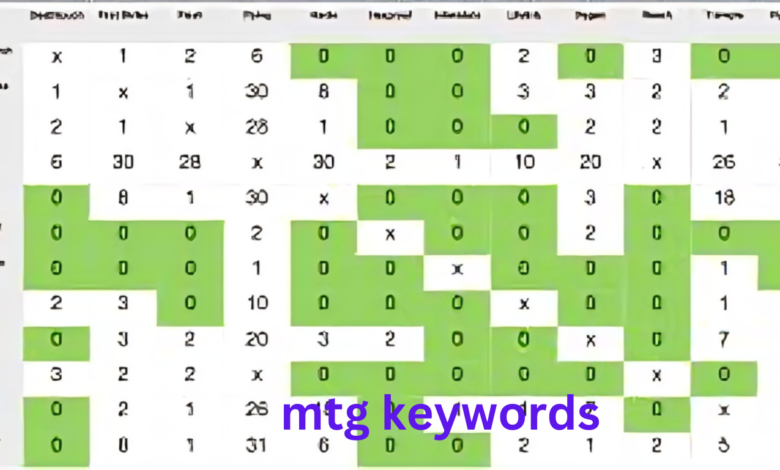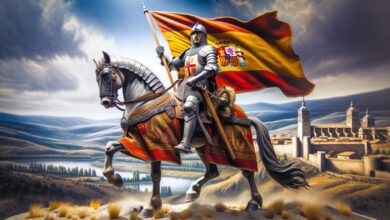MTG Keywords A Comprehensive Guide to Mastering Magic The Gathering

Magic: The Gathering (MTG) is one of the most iconic trading card games in history. Created by Richard Garfield and released in 1993, MTG has captivated millions of players with its strategic depth, lore-rich gameplay, and diverse mechanics. At the heart of this complexity lies MTG keywords—terms that summarize specific game mechanics and abilities. Understanding these keywords is essential for both new and seasoned players to elevate their gameplay.
In this article, we’ll explore the essential MTG keywords, their functions, and how to leverage them for a competitive edge.
What Are MTG Keywords
MTG keywords are concise terms that represent specific rules or abilities on cards. They simplify gameplay by replacing lengthy descriptions with a single word or phrase. These keywords fall into different categories, such as evergreen abilities (common across most sets), set-specific abilities, and mechanics tied to a particular theme or storyline.
Evergreen Keywords: The Foundation of MTG
Evergreen keywords are core mechanics found in nearly every MTG set. These abilities are universally understood and form the backbone of the game. Let’s look at some of the most popular ones:
1. Flying
- Description: Creatures with flying can’t be blocked except by creatures with flying or reach.
- Strategy: Flying creatures provide a significant advantage by bypassing ground-based blockers. Cards like Serra Angel and Storm Crow exemplify the utility of this ability.
2. Trample
- Description: When a creature with trample deals more damage than necessary to destroy a blocker, the excess damage is dealt to the defending player or planeswalker.
- Strategy: Trample is particularly effective for aggressive decks, allowing you to push damage through defensive lines. Cards like Goreclaw, Terror of Qal Sisma and Questing Beast shine with this ability.
3. Haste
- Description: Creatures with haste can attack or use activated abilities that require tapping as soon as they enter the battlefield.
- Strategy: Haste enables surprise attacks and quick responses, making it a staple in fast-paced decks. Look for cards like Ball Lightning or Fervent Champion.
4. Lifelink
- Description: Damage dealt by a creature with lifelink also increases its controller’s life total.
- Strategy: Lifelink provides sustainability in longer games, helping you recover from aggressive opponents. Cards like Vampire Nighthawk and Heliod, Sun-Crowned exemplify this ability.
Set-Specific Keywords: Evolving Mechanics
MTG thrives on innovation, introducing new mechanics with every set. These set-specific keywords often reflect the theme or story of the expansion. Here are a few notable examples:
1. Emerge (Eldritch Moon)
- Description: Allows you to cast a creature for a reduced cost by sacrificing another creature.
- Strategy: Emerge shines in decks focused on value and graveyard interactions. Cards like Elder Deep-Fiend bring this mechanic to life.
2. Exploit (Dragons of Tarkir)
- Description: When a creature with exploit enters the battlefield, you may sacrifice another creature to trigger additional effects.
- Strategy: Exploit works well in decks that benefit from sacrificing creatures, such as zombie or aristocrat archetypes. Cards like Sidisi, Undead Vizier are excellent examples.
3. Adventure (Throne of Eldraine)
- Description: Creatures with adventure have an additional spell effect that can be cast before they enter the battlefield.
- Strategy: Adventure provides versatility, allowing you to adapt to different scenarios. Cards like Bonecrusher Giant are highly valued for their flexibility.
Keywords That Define Gameplay
Some MTG keywords fundamentally shape gameplay strategies. These abilities often dictate the overall pace and flow of matches:
1. Deathtouch
- Description: Any amount of damage dealt by a creature with deathtouch is enough to destroy the target.
- Strategy: Deathtouch serves as a deterrent for opponents attacking or blocking your creatures. Cards like Poison-Tip Archer or Fatal Push exploit this mechanic effectively.
2. Indestructible
- Description: Creatures with indestructible can’t be destroyed by damage or effects that say “destroy.”
- Strategy: Indestructible is a defensive powerhouse, allowing your creatures to survive board wipes and combat. Cards like Avacyn, Angel of Hope and Darksteel Colossus embody this resilience.
3. Hexproof
- Description: Creatures with hexproof can’t be targeted by spells or abilities your opponents control.
- Strategy: Hexproof protects your key creatures from removal spells, making them ideal for auras and buffs. Cards like Slippery Bogle or Sigarda, Host of Herons are staples in this category.
Mastering Synergy Through Keywords
To become proficient in MTG, understanding individual keywords isn’t enough—you must also learn how to combine them for maximum impact. Here are some examples of keyword synergy:
1. Flying + Lifelink
- Example: Baneslayer Angel
- Effect: Gain life while dealing evasive damage.
2. Deathtouch + Trample
- Example: Questing Beast
- Effect: Assign one damage to blockers and trample the rest over to the opponent.
3. Hexproof + Indestructible
- Example: The Scarab God (indirectly through effects)
- Effect: Create a nearly unkillable creature that dominates the battlefield.
Building Your Deck Around Keywords
To maximize the effectiveness of MTG keywords, consider the following tips when building your deck:
- Identify Your Strategy: Are you building an aggro deck, a control deck, or something in between? Select keywords that align with your playstyle.
- Balance Offense and Defense: Combine keywords like haste and flying for aggressive plays while using lifelink and indestructible for defense.
- Utilize Support Cards: Include spells and enchantments that enhance keyword abilities. For example, Rancor amplifies trample, while Angelic Blessing boosts flying.
Common Mistakes to Avoid
While MTG keywords provide powerful tools, misusing them can lead to setbacks. Here are some pitfalls to watch out for:
- Overloading on Keywords: Adding too many keyword-heavy cards can dilute your deck’s focus. Stick to a clear strategy.
- Ignoring Counters: Certain keywords are countered easily. For instance, flying creatures are vulnerable to cards with reach.
- Neglecting Mana Curve: High-cost keyword cards can clog your hand. Balance them with cheaper options.
Conclusion
MTG keywords are more than just game mechanics—they are the language of Magic: The Gathering. Mastering these terms unlocks a deeper understanding of the game, allowing you to craft powerful decks and outmaneuver your opponents. Whether you’re a casual player or an aspiring pro, investing time in learning and leveraging keywords will undoubtedly elevate your MTG experience.
Now that you’re equipped with this comprehensive guide, it’s time to shuffle your deck, tap your lands, and put these strategies into practice. Embrace the power of MTG keywords and take your gameplay to new heights!
What are your favorite MTG keywords? Share your thoughts and strategies in the comments below!



